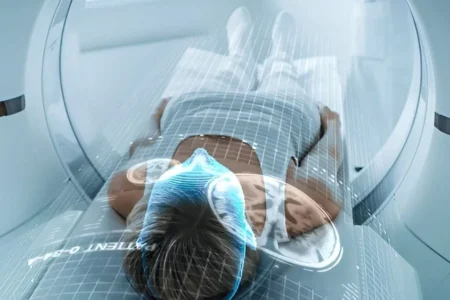AMH is a hormone produced in ovaries and indicates the size of a woman’s ovarian reserve. A higher level of this hormone indicates a higher ovarian reserve which means the ovaries have high capacity of producing viable eggs for fertilization. This hormone is also incorporated in various fertility tests and is helpful in predicting the age at menopause. AMH in circulation is found in women at birth, reaches its peak level at the age of 20-25, starts declining afterwards and becomes untraceable after menopause when the ovarian reserve is depleted.
Women with higher levels of AMH for their age tend to attain menopause later in life, which is itself known to be a risk factor for breast cancer but the study was able to find that AMH levels can also predict breast cancer risk even for cases of breast cancer that occur before menopause.
AMH Level & Breast cancer Risk
The research finding, published in the International Journal of Cancer, was led by Anne Zeleniuch-Jacquotte, Professor at NYU School of Medicine, in collaboration with colleagues at The Institute of Cancer Research (ICR) analysed blood samples from participants of ten cohort studies to examine the association of AMH levels with breast cancer risk. After statistical analysis the research concluded that women with high AMH concentrations were at higher risk of breast cancer than women with lower AMH concentrations of same age in a large prospective study.
The team examined AMH levels in 5,957 premenopausal women’s blood samples that had been collected prospectively from across the USA, the UK, Sweden and Italy. The study population was comprised of 2,835 participants with breast cancer and 3,122 controls of similar ages. The AMH levels in participant’s blood samples were compared between those in the highest quartile (top 25%) for AMH levels with those in the lowest quartile (bottom 25%).
After blood samples analysis by the team, it was revealed that women in the quartile with the highest levels of AMH in their blood were 60% more likely to develop breast cancer both before and after menopause in comparison to those in the lowest quartile. This led the research team to conclude that higher levels of AMH were found to be significantly associated with an increase in breast cancer risk and this trend continued across the entire range of AMH levels.
The team adjusted the results for potential confounding risk factors for breast cancer such as BMI, how many children each woman had had, a family history of breast cancer, and the age at which each woman started her periods (menarche).
While looking at whether AMH levels were linked to risk of developing certain subtypes of breast cancer, the researchers found that women with the highest levels of AMH were 96% more likely to develop breast cancer that is susceptible to being driven by both oestrogen and progesterone (ER+PR+ breast cancer) than those with the lowest levels of AMH.
What Next?
The research team is now examining the possibility of incorporating AMH levels into current risk prediction models and trying to unearth weather it could lead to improved prediction of breast cancer risk in premenopausal women.
Scientists hope that being able to incorporate these hormone levels could help provide a more accurate indicator of risk for younger women, in particular to identify those at a higher risk of developing hormone-positive forms of breast cancer.
Study leader Professor Anne Zeleniuch-Jacquotte said:
“The link we found between anti-Müllerian hormone and breast cancer risk is interesting because few markers of risk in the blood have been identified for premenopausal women. Our study found a moderate risk increase, and we hope additional markers can now be found to help substantially improve individual risk prediction.
“International collaborations like this one are critical to finding blood markers of breast cancer in younger women because individual studies often enroll too few young women to provide reliable results.”
According to the study co-author Anthony Swerdlow, it is the strongest evidence of breast cancer link yet and in future, anti-Müllerian hormone could be factored into new ways of predicting individual women’s risk of developing the disease.
He also said “The causes of breast cancer are highly complex and not yet fully understood. Pooling together large datasets is key to understanding how the many different causes interact and affect breast cancer risk.”
The Chief Executive of Breast Cancer Now, Baroness Delyth Morgan, which helped to fund the research, said:
“The discovery that high levels of anti-Müllerian hormone in the blood could indicate women at an increased risk of breast cancer is really promising.
“We now need to understand whether adding this blood test to current prediction tools could help give women a clearer picture of their risk, and identify those who could benefit from more frequent screening or preventive measures, such as tamoxifen.







